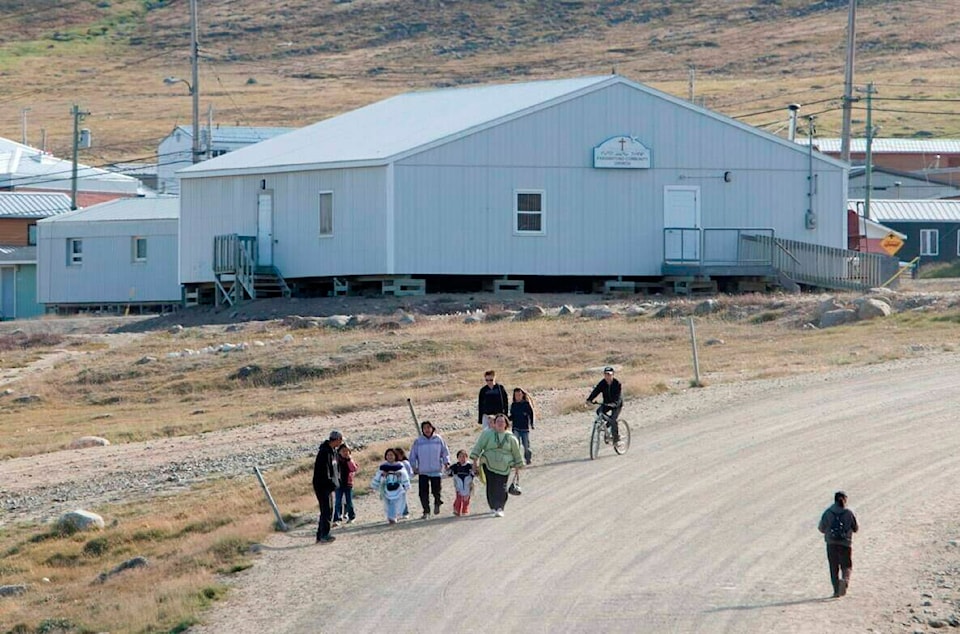Eric Lawlor was in a meeting about a tuberculosis outbreak in his community in December when he got a call from Nunavut’s top doctor telling him a resident had just tested positive for COVID-19.
The mayor of Pangnirtung says the COVID-19 case quickly became his biggest concern.
“Once COVID came, we totally lost track of the TB stuff.”
It was the first case of COVID-19 to reach Pangnirtung. The Baffin Island hamlet of about 1,400 people had also been dealing with a tuberculosis outbreak since late November.
Lawlor said health workers, already overwhelmed with the TB outbreak, had to quickly shift to protect the community from COVID-19.
“It was stressful at first, watching the numbers and praying they didn’t climb.”
The latest wave of COVID-19 would soon reach some of Nunavut’s smallest communities and stretch the territory’s health-care resources to its limits. As of Friday, there were five active cases in Pangnirtung.
Lawlor said residents knew TB was in the community last summer. In November, the Nunavut Health Department declared an outbreak when it became clear the disease was spreading among households.
The department told The Canadian Press it could not confirmhow many active cases of TB are currently in Pangnirtung.
Lawlor said despite the overlapping outbreaks, the community has kept its COVID-19 case count low and followed public health orders.
“People are taking it well and doing what they can to follow the rules and stay indoors. We’re getting through this,” he said.
Added health-care staff were sent to Pangnirtung after the TB outbreak was declared, something Lawlor said also prepared the hamlet for COVID-19.
“‘If anything, this episode of TB may have encouraged people to do their part and isolate.”
Tuberculosis is a bacterial airborne disease that typically infects the lungs. It has disproportionately affected Inuit for decades.
The average annual rate among Inuit is 290 times higher than Canadian-born, non-Indigenous people, says a 2018 report from the Public Health Agency of Canada.
In 2019, Prime Minister Justin Trudeau apologized to Inuit in Nunavut for the federal government’s mismanagement of TB in the 1940s and 1960s, when hundreds of people were sent to Southern Canada for treatment. Many never returned.
Ottawa has promised to eradicate TB in Inuit communities by 2030.
Dr. Pamela Orr, a former Nunavut doctor and professor of medicine at the University of Manitoba, said most people who get the lung infection have the bacteria in their body and do not have any symptoms.
But one in 10 with latent TB will develop an active infection, which is contagious and spreads quickly. The treatment is antibiotics for six to nine months.
Nunavut screens for the disease in all its communities using the same rapid-test machine the territory uses to analyze COVID-19 test samples.
If people get sick with TB, they need to be flown to a southern hospital, Orr said.
The territory urgently needs more health-care workers to help screen and treat TB across all 25 communities, she said.
“They’re doing the best they can with the resources available, but we need whole troops of them.
“We need to go door to door and try to treat (people) in their homes, instead of putting them on airplanes and sending them to hospitals.”
A housing shortage and overcrowded homes serve to spread COVID-19 and TB quickly once either disease is in a community.
“Housing is the biggest issue we face,” Lawlor said. “There are multiple families per house. People are sleeping on couches.”
Nunavut Premier P.J. Akeeagok has said the spread of COVID-19 has further highlighted the housing crisis.
“It has exemplified the urgency for true action and it’s felt right across the territory,” he said.
He added the territory needs 3,500 housing units at a cost of $2 billion.
In Pangnirtung, streets are empty because of the diseases. Lawlor credits residents for preventing what he fears could have been widespread outbreaks.
“Seeing our first recovery — and then more recoveries after — made me feel great,” he said.
“I’m really proud of the community.”
READ MORE: Nunavut to lift COVID-19 lockdown Monday
___
This story was produced with the financial assistance of the Facebook & Canadian Press News Fellowship
Emma Tranter, The Canadian Press
Like us on Facebook and follow us on Twitter.
